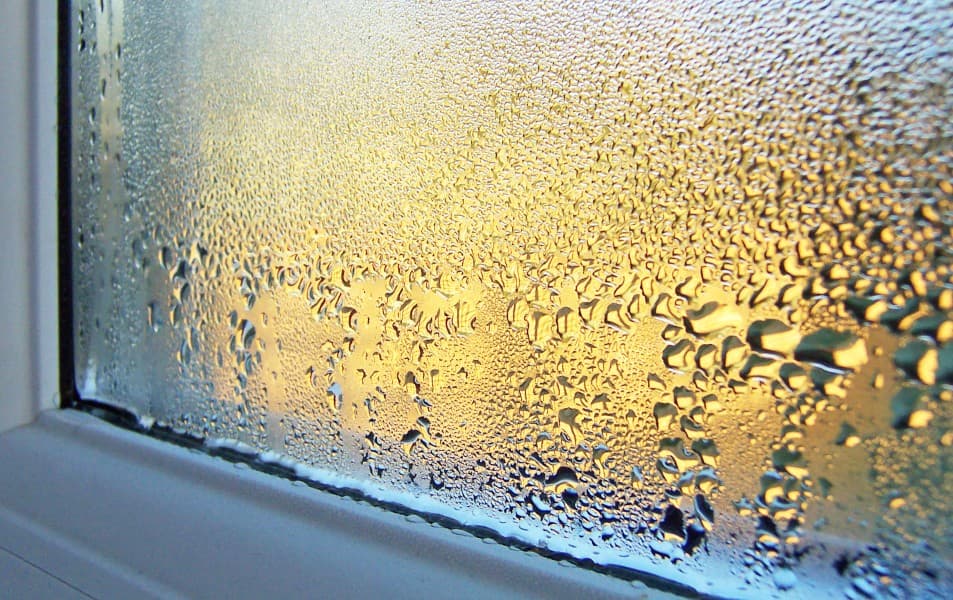Understanding Indoor Window Condensation: Causes, Risks, and Solutions
It is one of those small but annoying problems many homeowners face. You open your curtains in the morning only to find your windows soaked with tiny droplets of water on the inside. Your first instinct might be to blame the weather or your windows themselves, but the real cause of indoor window condensation runs deeper. If your windows are fogging up more often than you would like, there is a scientific and practical explanation behind it - and, more importantly, there are things you can do to help.

Condensation On Inside Of Windows
What Is Condensation and Why Does It Happen?
Condensation is the process by which water vapor in the air turns into liquid when it comes into contact with a colder surface. It is the same reason you see water droplets on the outside of a cold drink can. In the case of windows, condensation forms when warm, moist indoor air meets a colder glass surface. The vapor in the air cools quickly and changes into liquid form, appearing as mist or droplets on the window pane.
It is important to note that condensation on the inside of your windows is different from condensation between double glazing panes. Internal condensation is caused by conditions inside your home, while condensation inside the window unit usually means the seal has failed - a sign that the window may need replacing.
Why Moisture Builds Up Inside Your Home
Everyday activities like cooking, showering, washing clothes, boiling the kettle, and even breathing release moisture into the air. If this moisture has nowhere to go, it stays trapped inside the house. Poor ventilation makes the situation worse, allowing warm air to saturate with water vapor. When this air eventually comes into contact with cooler surfaces like your windows, condensation forms.
Newer, more energy-efficient homes often suffer from this issue because they are better sealed than older buildings. While this makes them excellent at retaining heat, it also limits airflow. Without adequate ventilation, the moisture produced inside the home gets trapped, increasing the chances of condensation forming on cold glass.
Temperature Differences Matter
During colder months, indoor air tends to be warmer than the air outside. This temperature gap causes your windows to be significantly cooler than the air inside your home. The result? A perfect surface for water vapor to condense on. Single-glazed windows are especially prone to condensation due to their limited insulation. Even double-glazed windows can show signs of misting if there is enough humidity indoors and the glass surface is sufficiently cold.
Bedroom windows are often the worst affected because we release moisture as we sleep, and we typically close doors at night. With less air circulation and heating turned down or off, the bedroom becomes a humidity trap, making condensation more likely by morning.
Are Your Windows to Blame?
It is easy to blame the window itself when you see moisture gathering. But the window is not generating water; it is simply the surface where water vapor becomes visible. High-quality modern windows do not cause condensation - they reveal it. If you see water on your windows in the morning, it is a symptom of high humidity in your home, not faulty glazing.
However, poorly insulated windows can worsen the situation. Single-pane or non-coated double-glazed units tend to be much colder in winter, making them prime candidates for condensation. In contrast, thermally efficient windows with warm edge spacers, argon gas fillings, or low-e coatings remain warmer and reduce condensation buildup.
Is Condensation on the Inside Dangerous?
Occasional condensation is not usually a serious problem, especially if it dries quickly. But consistent condensation over weeks or months can lead to more serious issues. Excess indoor moisture creates a perfect environment for mold, mildew, and dust mites. These allergens can trigger asthma, respiratory problems, and other health issues, particularly in children and the elderly.
In addition, condensation that drips onto wooden frames or walls can eventually cause rot, staining, and structural damage. Over time, it can also reduce the lifespan of window sills, curtains, blinds, and paintwork.
Long-Term Solutions and Moisture Control
Reducing condensation starts with managing humidity levels inside your home. Improving ventilation is one of the most effective approaches. This can be as simple as opening windows briefly each morning to let moist air escape. Installing trickle vents on windows or using extractor fans in high-moisture areas like kitchens and bathrooms can also help regulate airflow.
In rooms with consistent moisture problems, a dehumidifier may be necessary. These devices draw moisture from the air and can be especially effective in bedrooms, basements, or poorly ventilated spaces. Keeping interior doors open during the day and heating your home evenly can also prevent warm, moist air from becoming trapped in cold pockets.
Finally, upgrading your windows may be a worthwhile investment. Double or triple glazing with thermal breaks, argon gas, and low-e coatings not only reduces heat loss but also helps prevent the inside glass from becoming cold enough to attract moisture. The result is a more energy-efficient, healthier home.
What to Do When You Spot Condensation
If you wake up to find droplets on your window panes, take action quickly. Wipe them away with a dry cloth to prevent water from running down onto wooden sills or walls. Check if any furniture is placed too close to the windows, as this can block airflow and worsen condensation. You should also inspect curtains and blinds for dampness and allow them to dry fully during the day.
If the condensation persists day after day, it is worth tracking indoor humidity levels using a hygrometer. A healthy range is typically between 30 and 50 percent. Anything consistently above 60 percent signals that moisture control is needed.
Conclusion
Condensation on the inside of your windows is not just a nuisance - it is a sign that your home may be holding too much moisture. While it is common, especially in colder weather, persistent condensation can lead to mold, damage, and health concerns if left unchecked.
By understanding the relationship between humidity, temperature, and airflow, you can take steps to reduce indoor moisture and protect your windows and home. Whether you make small lifestyle adjustments or invest in upgraded glazing, managing condensation means a drier, healthier, and more comfortable living space year-round.













Great post! Glazing is such an important aspect of both aesthetics and energy efficiency in modern buildings. It’s amazing how the right glass choices can completely transform a space while also improving insulation and reducing noise. Thanks for sharing!